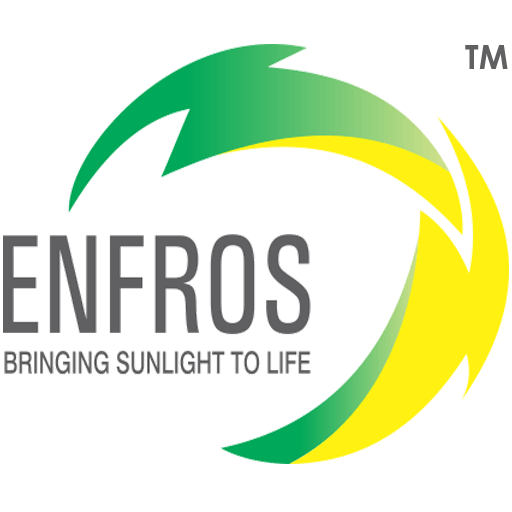
Solar energy is a clean, renewable, and abundant source of power. In recent years, solar panels have emerged as an increasingly popular tool for harnessing this natural energy from the sun. Solar panels are made up of photovoltaic cells that absorb light from the sun and convert it into electricity. As technology advances, the efficiency and cost-effectiveness of solar panels can be expected to increase significantly. In this article, we will explore the future of solar panel efficiency: what can we expect?

The most important factor in determining the efficiency of solar panels is their ability to capture sunlight and convert it into usable electricity. This depends on both their material composition and design structure. Currently, solar cell technology mostly consists of silicon-based materials such as monocrystalline or polycrystalline silicon cells. These cells are able to convert around 20 percent of incoming sunlight into electricity. The remainder is either reflected away or absorbed by the panel itself, leading to its heating up and eventual inefficiency. To get more efficient solar cells, researchers are now experimenting with new materials such as perovskites that have higher light absorption capabilities than silicon-based materials.
In recent years, solar panels have become an increasingly popular renewable energy source. This is due to the rapid advances in solar panel efficiency that continue to make solar energy more cost-efficient and reliable. The advances made over the past decade have led to a boom in the field of solar energy, with many countries making strides towards creating a greener and more sustainable world by investing heavily in this form of renewable energy. So, what does the future of solar panel efficiency hold? To answer this question, let’s take a look at some of the recent developments and what we can expect in the coming years.
One of the most important advances in terms of improving solar panel efficiency has been the development of monocrystalline solar cells. These are made from a single crystal wafer and are highly efficient at converting sunlight into electrical power. Monocrystalline cells are also able to withstand extreme weather conditions better than other types of cells, making them ideal for use in areas with severe weather conditions. As technology continues to advance, we can expect more efficient monocrystalline cells that will be able to produce even more power from sunlight while being more resistant to extreme weather conditions.

Perovskite solar cells are a relatively new technology that offers immense potential for increasing solar panel efficiency. These cells are composed of layered crystals and have shown great promise in terms of their ability to convert sunlight into electricity with greater efficiency than traditional silicon-based cells. Furthermore, they require very little material to produce which can result in significant cost savings when compared to other types of solar cell technology. Looking ahead, it is likely that perovskite technology will continue to progress and offer even higher levels of efficiency as research continues into this powerful type of renewable energy source.

Solar panels are a major source of renewable energy. As technology advances, the efficiency of solar panels is increasing, benefitting both people and the environment. Sun life is becoming more sustainable with increased solar panel efficiency. With the continual advancement of this technology, the future of solar panel efficiency looks bright. As solar energy is one of the cleanest forms of energy available, it produces no harmful emissions or pollutants that can damage air quality or contribute to global warming. The increase in solar panel efficiency reduces our reliance on non-renewable sources such as coal and fossil fuels for energy production and contributes to a healthier planet for future generations. The cost associated with installing and maintaining solar panels has decreased as technology has advanced, making it much more accessible for people to take advantage of these benefits. This decrease in cost has created an increase in demand, resulting in improved products from manufacturers and further advancements in research and development to boost efficiency even more. In addition to environmental benefits, increased solar panel efficiency also offers financial advantages. People who invest in this technology can benefit from long-term savings on their electricity bills as well as reduce their carbon footprint. Businesses that utilize renewable energy sources such as solar panels can gain access to government subsidies and incentives which can help offset installation costs or provide additional economic returns over time. The future of solar panel efficiency looks promising due to recent technological progressions which have made renewable energy more affordable and efficient than ever before. Research is ongoing in developing countries such as India, China, South Africa and Brazil—where there’s huge potential for growth in the adoption of solar power—which will lead to further improvements in the reliability and affordability of this type of energy production going forward. Overall, increased solar panel efficiency is beneficial for both people and our planet due to its environmental friendliness, financial savings potential, and steady advances towards improving sustainability by reducing reliance on non-renewable sources. With continued research into new technologies that improve performance while lowering costs, we can continue looking forward to a brighter sun life powered by renewable energy sources such as solar power.

Solar panels are a critical component of renewable energy production, and their efficiency is key to maximizing the potential of solar energy. As technology progresses, scientists and engineers must face certain challenges in order to improve solar panel efficiency. Despite these challenges, we can expect significant advances in the future of solar panel efficiency. The first challenge involves finding new materials that are capable of increasing the photovoltaic cell’s ability to absorb more photons from sunlight. Some of the materials currently used in solar cells are expensive, while others have limited availability or possess other drawbacks such as being too brittle for large-scale deployment. If new materials can be created, they will be able to increase both the conversion rate from sunlight into electricity and the average lifespan of a panel - resulting in greater efficiency overall. The second challenge involves developing new methods of manufacturing solar panels that will enable them to be more cost effective and efficient than existing technologies. Traditional manufacturing techniques often require significant amounts of time and resources; however, emerging technologies like nanowire printing may drastically reduce these costs while also allowing for faster production times. This could result in a reduction in overall costs associated with owning a solar energy system - making it much more attractive for consumers who wish to transition away from traditional sources of energy such as coal or oil. The third challenge involves learning how to best utilize solar panels in different contexts. Different climates may require different methods for setting up and orienting panels while also taking into account things like peak sun hours or weather patterns that could affect output over time. By understanding how different environmental factors can impact performance, engineers can further optimize their designs so that they are able to produce maximum power without wasting any valuable resources. Ultimately, these challenges will need to be faced if we want to see improved solar panel efficiency on a global scale - but with continued developments in technology and research, it is possible that we may see dramatic progress over the next few decades. With increased accessibility and affordability, renewable energy sources such as solar power could become commonplace around the world - leading us closer towards a sustainable future powered by sun life.

Solar panels have revolutionized the way we use energy, but what can we expect from the future of solar panel efficiency? As renewable energy becomes more in demand, scientists and researchers are working hard to discover new ways to increase solar panel efficiency. By understanding what is currently being done and what might be done in the future, we can begin to get a glimpse into the possibilities of what lies ahead.

At present, most commercially available solar panels have an efficiency rating of 15-20%. This means that 15-20% of the sun's energy is captured by the panel and converted into usable electricity. While this percentage may seem low, it is actually quite impressive when compared to other forms of renewable energy production. For example, biomass fuel cells only convert about 5-10% of their energy into usable electricity - much less than solar panels.
When it comes to increasing solar panel efficiency, there are numerous strategies that researchers are looking into. For example, scientists are exploring ways to create “multi-junction” solar cells that could capture more energy from any given incident light ray. This could lead to higher overall efficiency or even enable panels to generate more electricity during times when sunlight may be scarce. Additionally, researchers are also exploring new materials to use for creating more efficient solar cells and optimizing their manufacturing processes. All these efforts could lead to greater gains in overall efficiencies for producing clean and renewable solar power.
In order to optimize our current practices and explore new possibilities for the future of solar panel efficiency, industry leaders must come together with innovators and visionaries who can dream up creative solutions for harnessing the sun's energy. By investing in research efforts and exploring novel approaches such as artificial intelligence techniques or machine learning algorithms, we can ensure that we capitalize on every opportunity available for maximizing our renewable energy output from solar panels. The future for solar panel efficiency looks bright indeed! With advancements in technology as well as collaborative efforts between those within the industry, there is tremendous potential for harnessing even more clean power from the sun with greater efficiencies than ever before possible!








